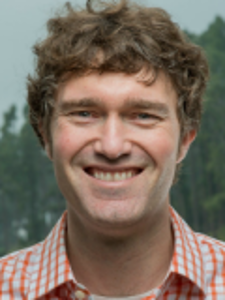OSE Seminar by Prof. P. James Schuck on Strain-localized excitons and nonlinear van der Waals photonics in 2D semiconductors
Departmental News

Posted: October 18, 2024
Date: Thursday, October 24, 2024
Time: Noon to 1:00 PM
Location: PAIS, Room 2540 and Zoom
Abstract:
The advancement of quantum photonic technologies relies on the ability to precisely control the degrees of freedom of optically active states. First, motivated by recent evidence showing that nanowrinkles generate strain-localized room-temperature emitters, we demonstrate a method to intentionally induce wrinkles with collections of stressors. We show that long-range wrinkle direction and position are controllable with patterned array design, forming quantum emitters as evidenced by cryogenic anti-bunched emission. Next, we realize real-time, room-temperature tunable strong plasmon-exciton coupling in 2D semiconductor monolayers enabled by a general approach that combines strain engineering plus force- and voltage-adjustable plasmonic nanocavities. Our work demonstrates the potential to control and tailor plexciton states localized in monolayer (1L) transition metal dichalcogenides (TMDs), paving the way for on-chip polariton-based nanophotonic applications spanning quantum information processing to photochemistry. Finally, I will discuss our recent results demonstrating exceptional nonlinear optical frequency conversion in TMDs. By fabricating nano-photonic elements such as waveguides, metasurfaces, and periodically poled stacks, we achieve macroscopic frequency conversion efficiencies over microscopic distances, 10 − 100× smaller than current systems with similar performances. Further, we report the broadband generation of entangled photon pairs at telecom wavelength via quasi-phase-matched spontaneous parametric down-conversion, showing the highest coincidence-to-accidental-
Biography:
Jim Schuck is a professor in mechanical engineering at Columbia University. He earned his B.A. in Physics at UC Berkeley and his Ph.D. in Applied Physics at Yale University. Jim then did his postdoctoral studies with Prof. W. E. Moerner at Stanford University, studying optical nanoantennas and single-molecule spectroscopy. His group aims to characterize, understand, and control nanoscale light-matter interactions, with a primary focus on sensing, engineering and exploiting novel optoelectronic phenomena emerging from nanostructures and interfaces. Current research interests include the investigation and applications of 2D materials and upconverting nanoparticles (UCNPs) for nano- and quantum-photonics.
